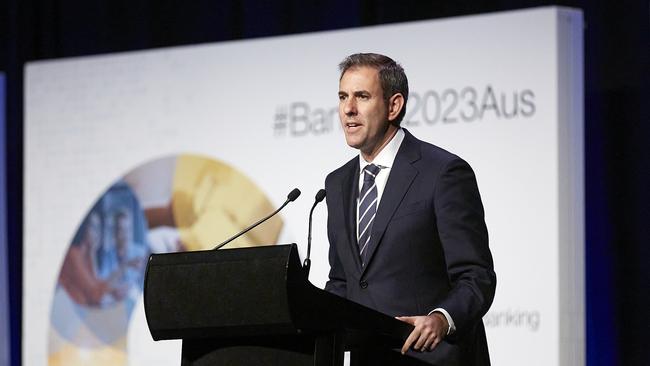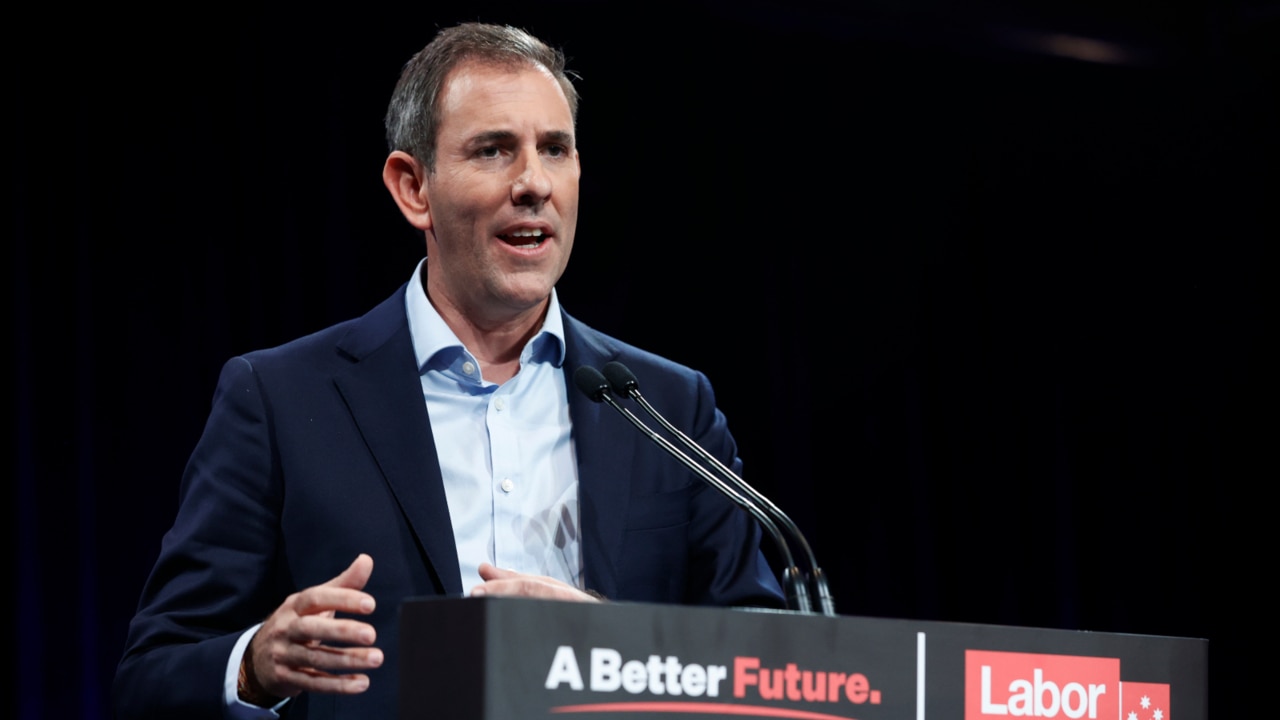Australia’s financial system faces ‘big’ challenges amid AI, digitisation: RBA, ASIC, APRA
The nation’s robust financial system faces regulatory and cyber risks due to rapid digitisation and the emergence of technologies like AI, regulators warn.

Business
Don't miss out on the headlines from Business. Followed categories will be added to My News.
Australia’s financial system is stable and well capitalised but rapid digitisation and technology like artificial intelligence pose big regulatory and cyber risk challenges for the country, top regulatory officials warn.
Australia is managing to navigate the challenge posed by high inflation and rapid rate rises, but the rapid digitisation of life and AI, in particular, were posing new and “big” challenges for the regulators, officials told the Australian Banking Association conference on Wednesday.
“The big challenge for me at the moment is thinking about AI and the potential implications of that for the work that we are doing at the bank,” Reserve Bank of Australia deputy governor Michele Bullock said.
“It’s not only about the payment system, I think it’s more generally about the whole cyber risk thing, and it’s a big challenge.”
Big Australian companies such as lender Latitude Financial, health care provider Medibank and telecommunications company Optus have been targets of major cyber attacks in recent years. Cyber experts have warned that AI could turn such attacks exponentially worse.
But AI can also be an opportunity for regulators, Ms Bullock said.
“I wonder if as regulators, we can harness some of this. It can help us do our jobs better, but we do need the frameworks to get on top of it.”
Australian Securities & Investments Commission ASIC chairman Joseph Longo said regulators needed to understand “the black box” behind AI.
“Underlying all of this are algorithms – well someone has to explain how they work, how the variables relate to one another,” he said. “(It’s) a huge challenge – it’s happening right now in various sectors.”
Mr Longo said the technology had “exploded onto the scene” and he expects they will manifest in “new forms of misconduct, in new forms of harm for investors and consumers, and frankly, new challenges for us to investigate that.”
He said regulators didn’t have “much of a choice” but to take the opportunity to use the technology too for their policing work. “With the technologies, the data, and the AI, we live in an interconnected world with very high community expectations around service delivery … there’s the opportunity, but there’s a challenge as well.”

As part of the country’s biggest overhaul of payments in decades, the Albanese government announced a “strategic plan” that focuses on boosting competition and productivity, strengthening the country’s infrastructure, modernising regulatory frameworks and lifting cyber security investment to combat scams and fraud.
Treasurer Jim Chalmers said the plan was a “central” piece to ensuring Australia takes the opportunity this decade to harness the power of artificial intelligence and increase productivity.
“In its broadest sense … we see the next decade as really a defining decade for our economy and for our country,” he said. “Digitisation and new developments in technology like AI have the potential to unleash a new wave of productivity improvements.”
“So this is an important part of a much bigger story, what we want to do in payments, what we want to do in the financial system is really to recognise that if we want the economy to be more competitive, innovative, productive, then we need there’s a really important role for payments to play in that.”
In the past five years, the use of mobile wallets and apps has increased 12,000 per cent, a study commissioned by the Australian Banking Association and published on Wednesday said.
The study also showed the take-up of new cryptocurrencies-related products or services in the past 12 months was 9 per cent, higher than the group taking a new mortgage (8 per cent), personal loan (8 per cent) or pension/retirement fund (5 per cent) – something that shocked Mr Longo at ASIC.
“I’m still quite taken by the interest in crypto in this country. It really struck me,” he said. “That’s very interesting to ASIC.”

Mr Longo noted regulators’ were dealing with a “very full agenda” which was also a “big challenge for all of us, to absorb all of that change,” he said referring to all three financial regulators.
“We are trying to deal with the ASX, we’ve got climate risk disclosures, crypto, dealing with other law reforms that are imminent or yet to be enacted.”
ASIC has been cracking down on greenwashing by companies and superannuation funds. An emerging trend of companies or funds withdrawing climate-related disclosures in order to avoid regulatory scrutiny was also an area of focus for the regulator, Mr Longo said.
With the International Sustainability Standards Board expected to finalise a global baseline for sustainability disclosures, Mr Longo said all company boards – not just banks – needed to work together, and quickly.
“The government’s indicated and ASIC have supported mandatory disclosure. But there’s a massive amount of work involved in rolling that out,” he said. “That will involve collaboration.”
On Wednesday, the government updated its “statement of expectations” for the Australian Prudential Regulation Authority with a specific mandate to factor risks related to climate into their policing of the banking, superannuation and insurance industries.
“That’s been a focus of our work for some time,” APRA chair John Lonsdale told the conference.
“And what we’re saying to entities is you need to be aware of that. So we’re not telling entities what they should or shouldn’t do, where they should or not lend. But what we’re saying is, you need to be aware of it (and) you need to factor it into your decisions.”
APRA polices how banks manage operational risk, liquidity, credit risks, and climate risks. It stress-tested the banks on their climate risk policies to produce a climate vulnerability assessment last year.
“We’ve looked at a few entities and run a couple of scenarios, and its really interesting, the results out of that. That actually climate risk does affect the balance sheets of regulated entities, and it affects some areas more than others affect some industries more than others.”
The new statement, which renews former treasurer Josh Frydenberg’s expectation statement in 2018, asks APRA to “promote prudent practices and transparency in relation to climate-related financial risks and the adoption of climate reporting standards by regulated entities.”
As the global economy weakens, particularly in Europe and the US, Mr Lonsdale said there was substantial risk ahead, but noted the banks were very liquid, well funded and had lifted their credit standards.
“People can be very confident that we’ve got a very sound stable system,” he said. “But we are not complacent. There are some lessons that we can learn over the last few months.”
More Coverage
Originally published as Australia’s financial system faces ‘big’ challenges amid AI, digitisation: RBA, ASIC, APRA




